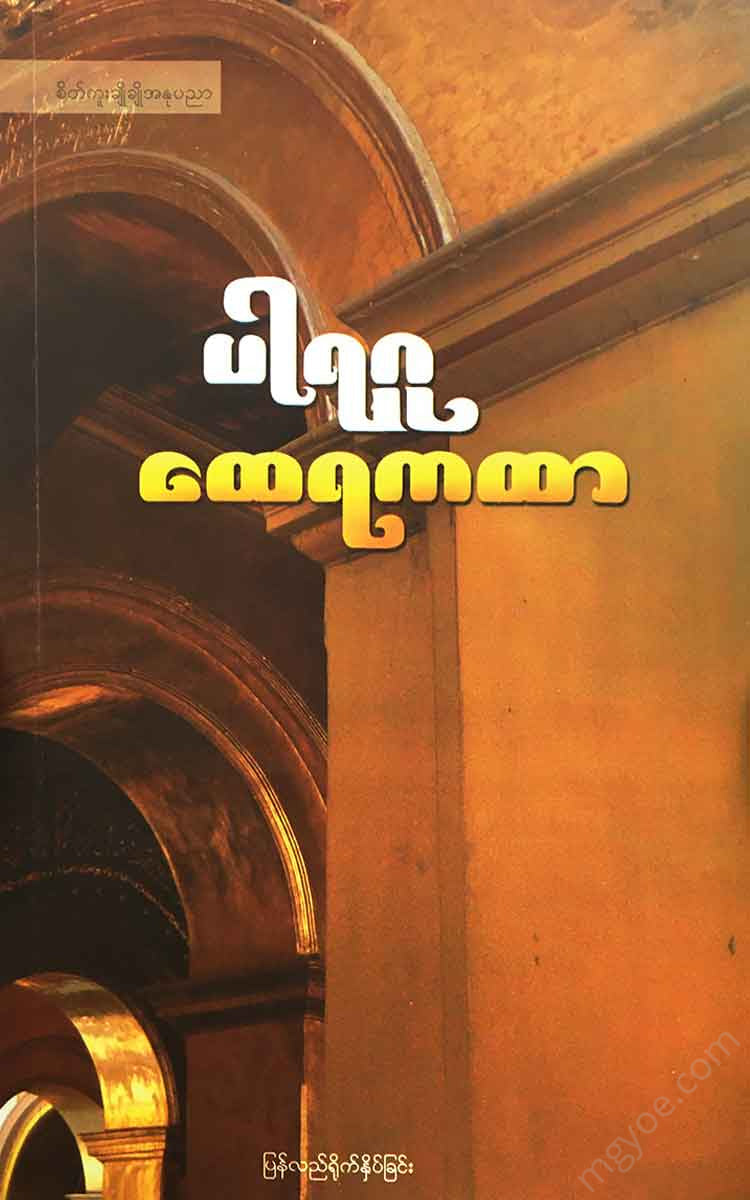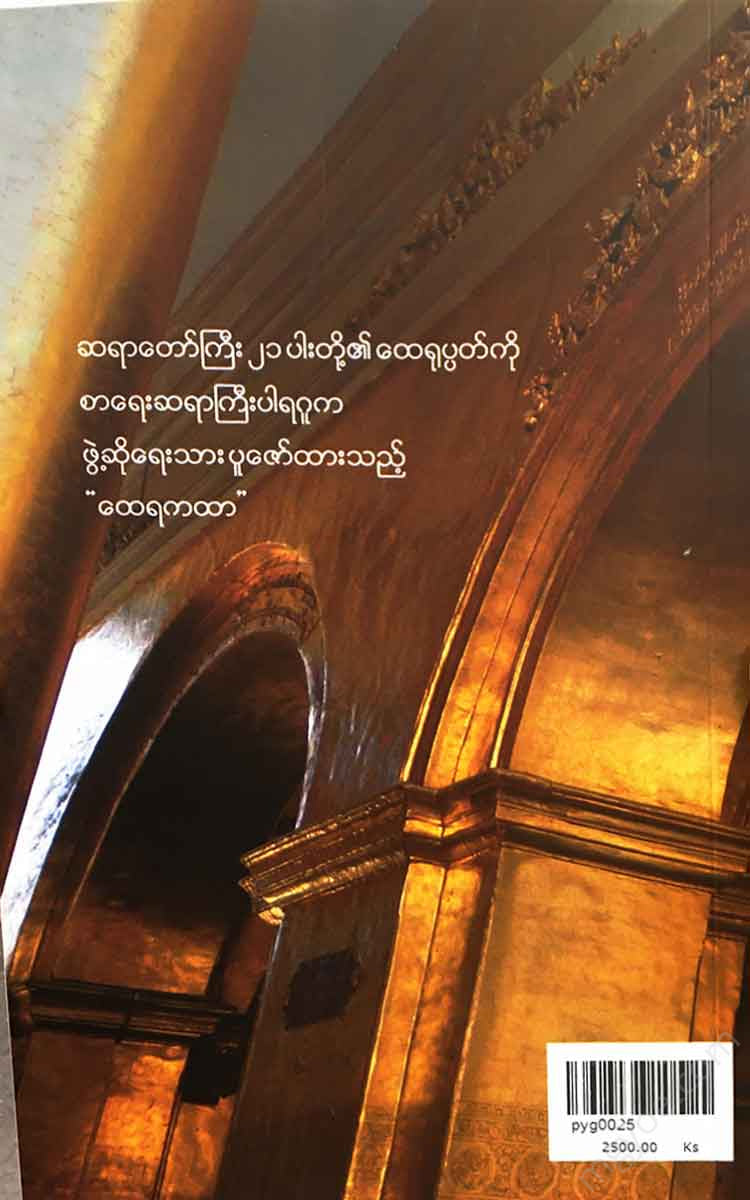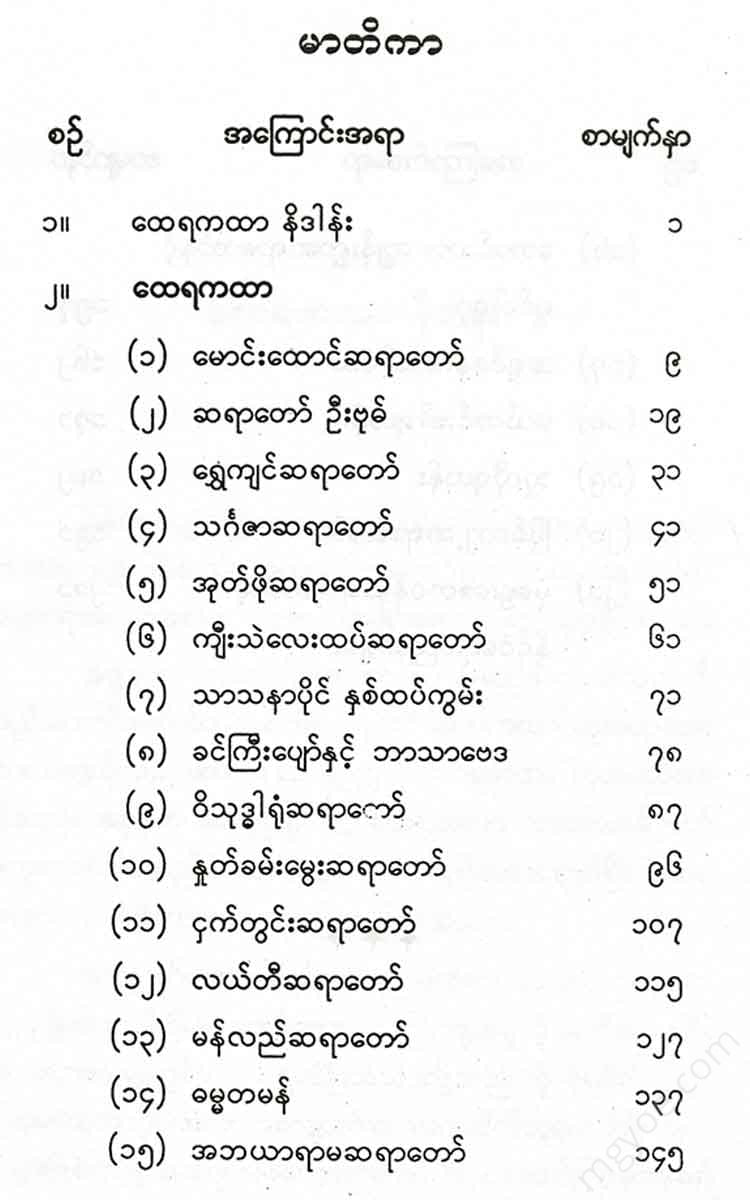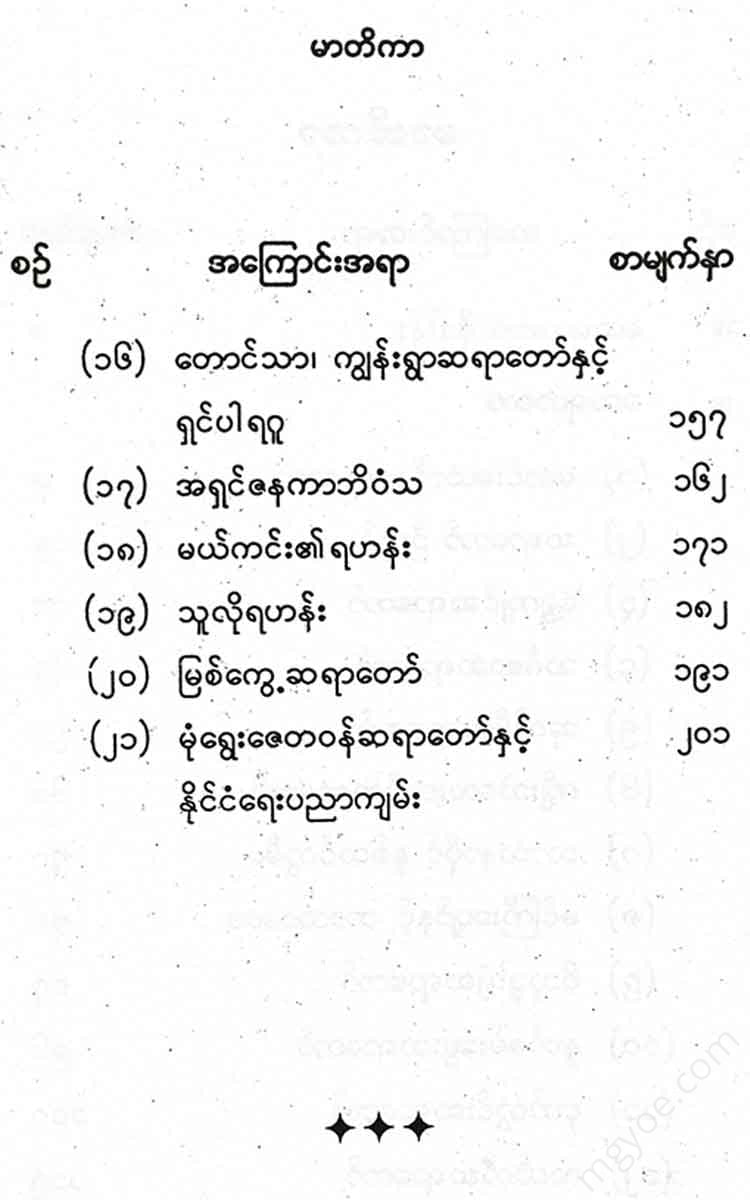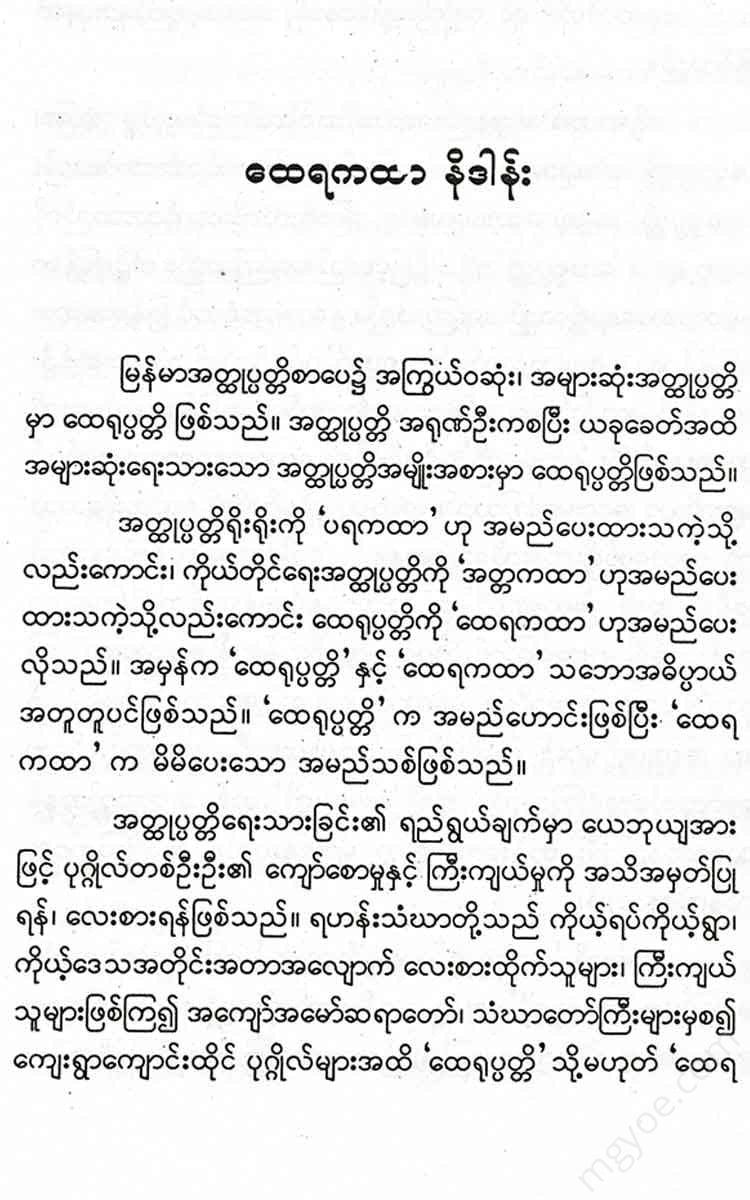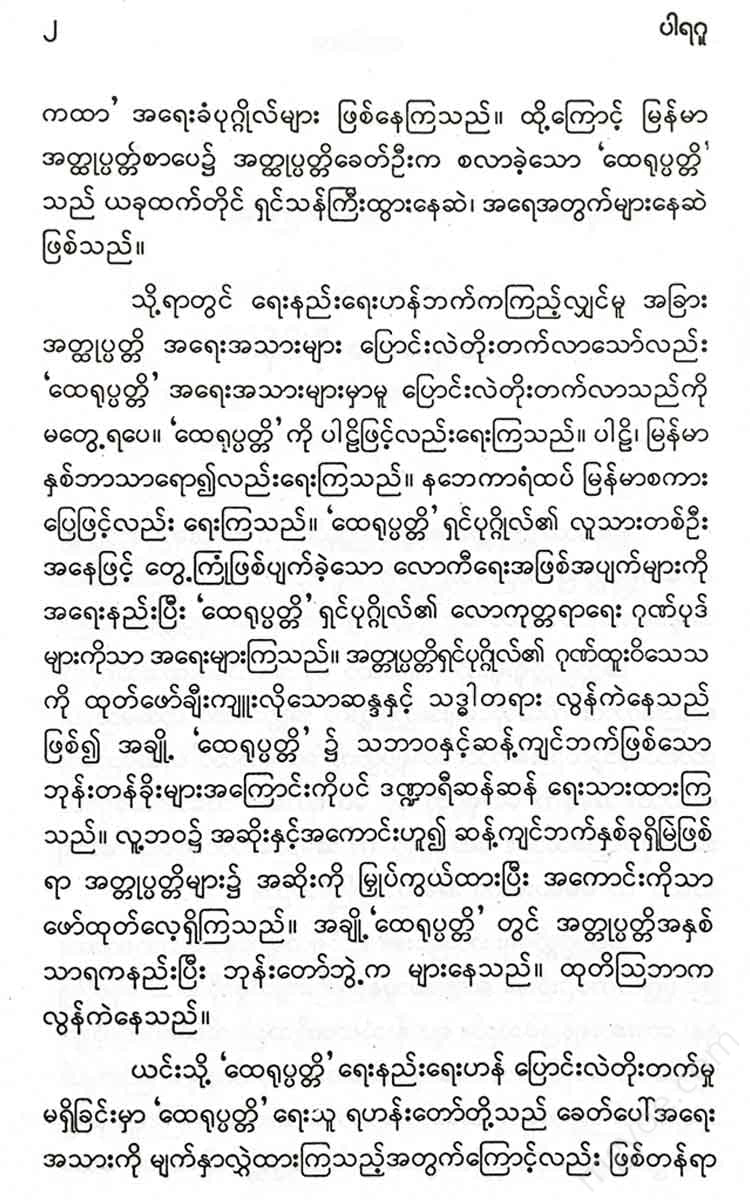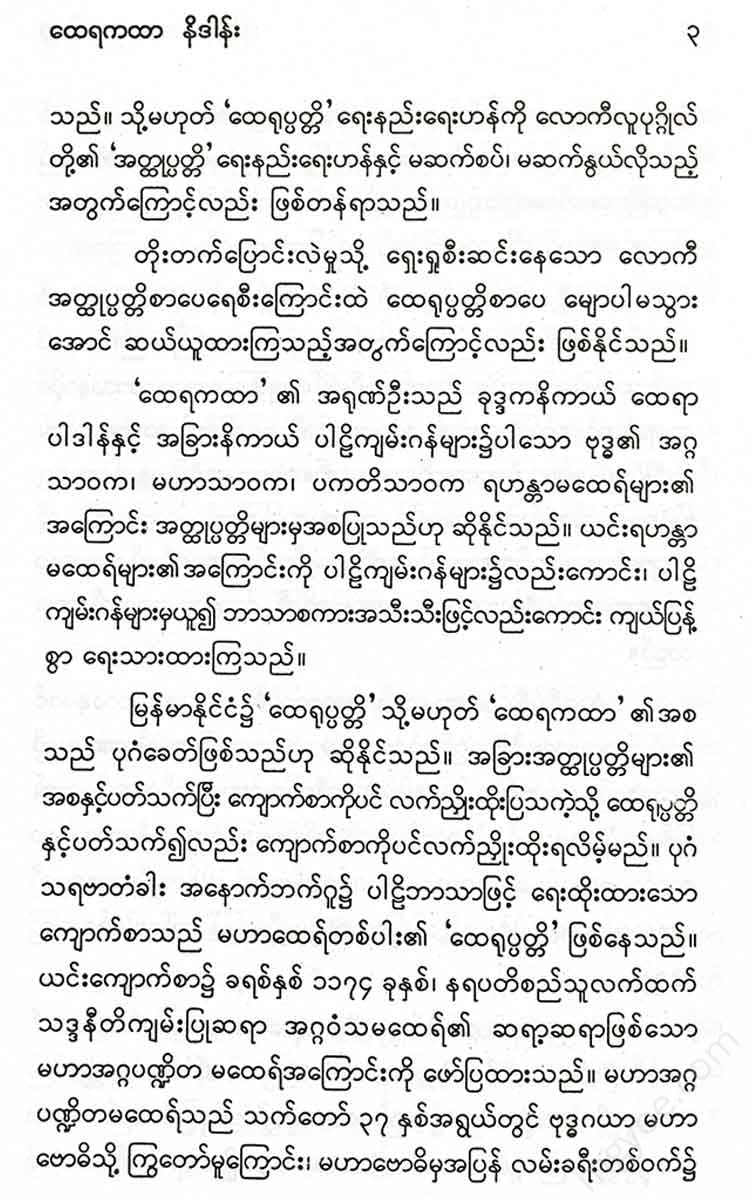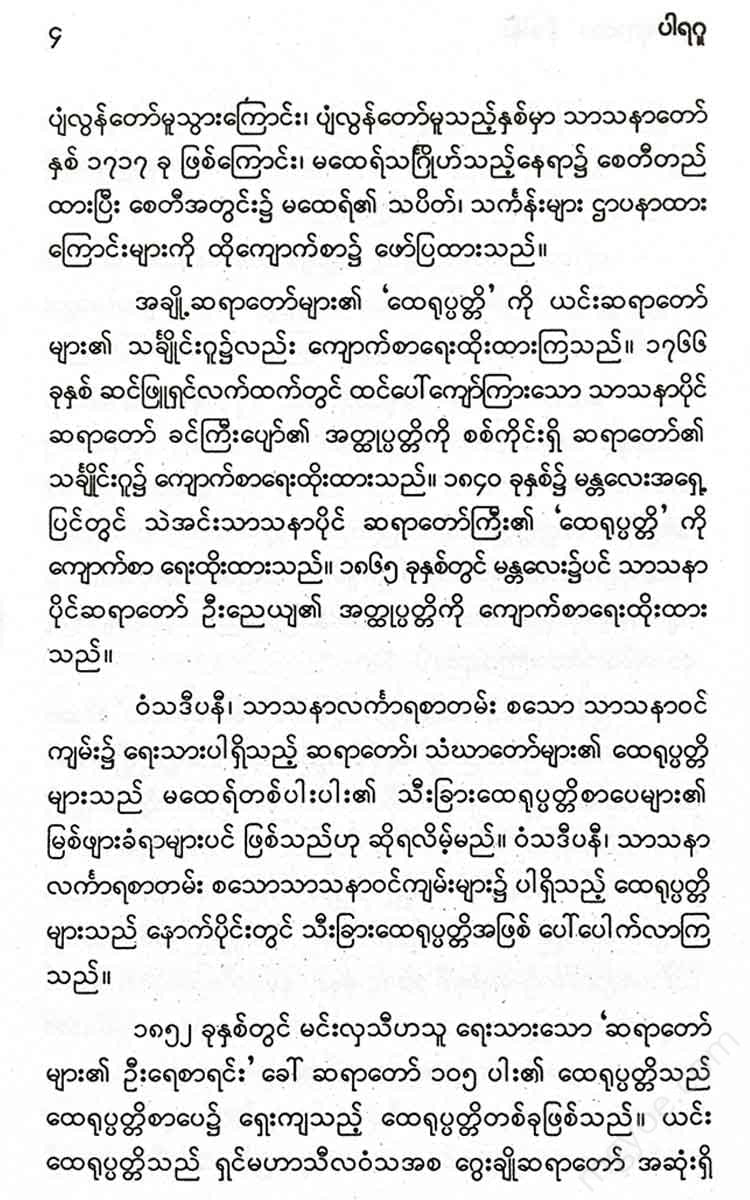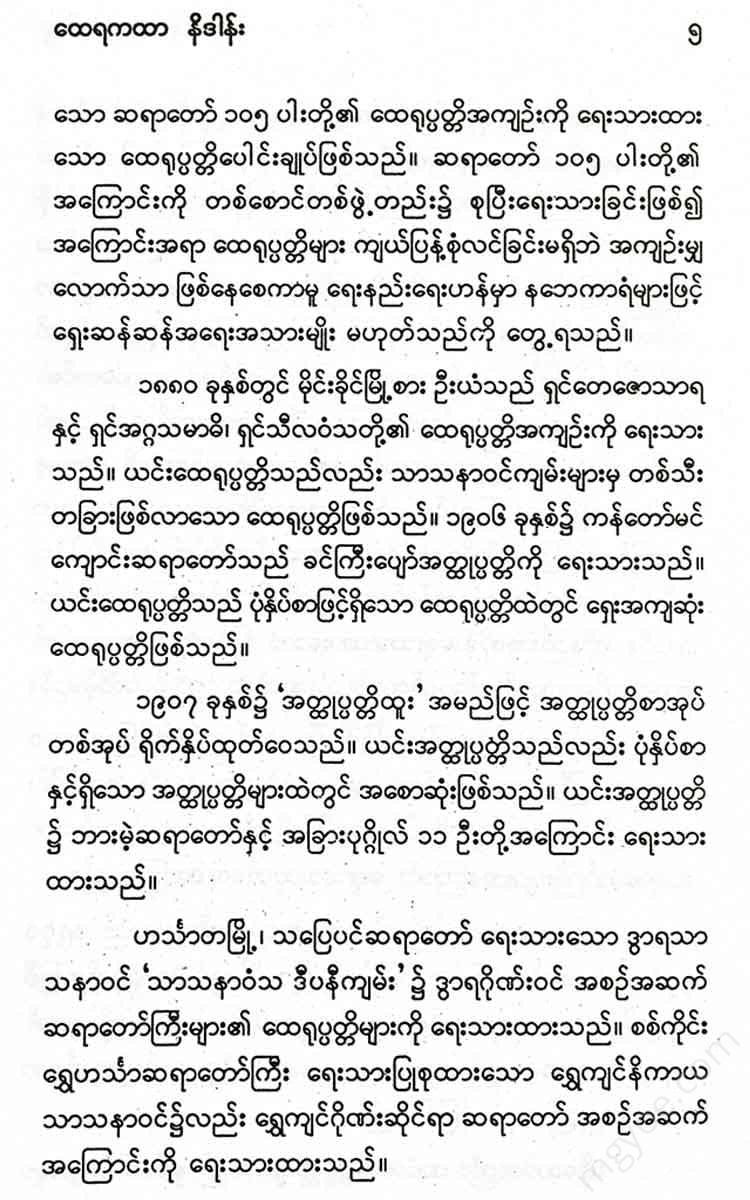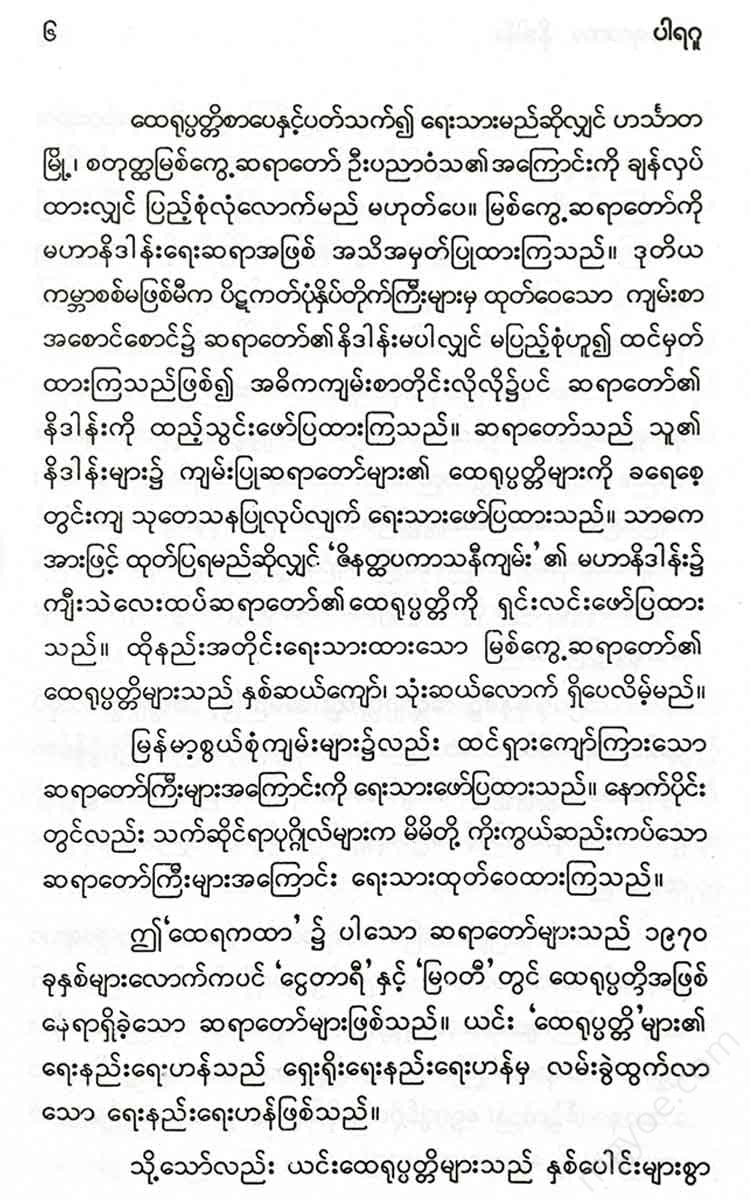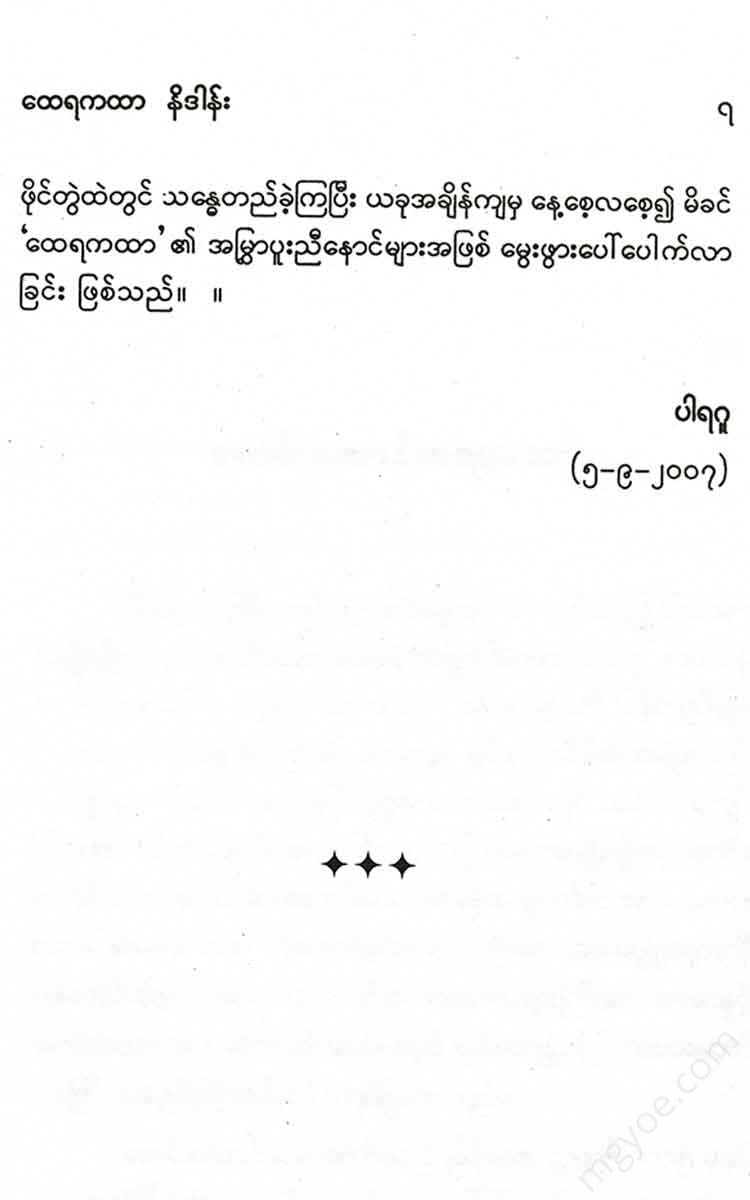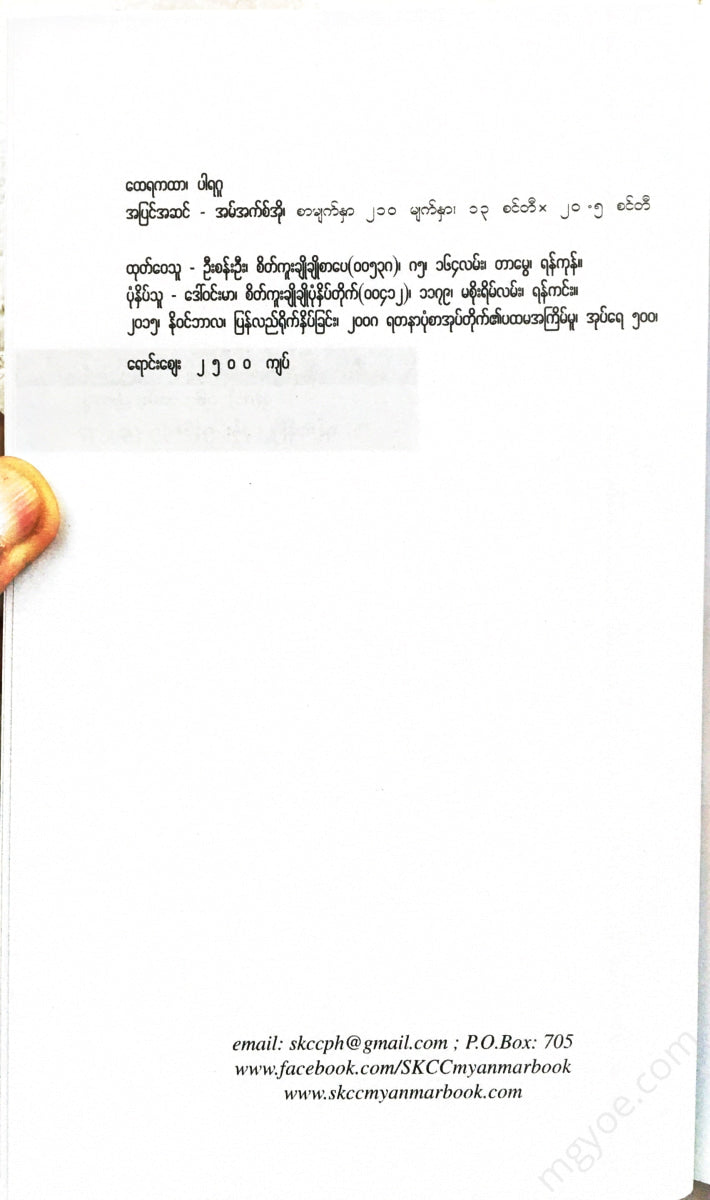စိတ်ကူးချိုချိုစာပေ
Expert - Therakatha
Expert - Therakatha
Couldn't load pickup availability
Master of the prison
King Milinda asked various questions about the Buddhist Abhidhamma to the monk Nagasin. Nagasin answered the questions asked by King Milinda. King Milinda’s questions and Nagasin’s answers are known in Buddhist literature as the “Milinda Panchasa.” The monk asked various questions to the monk of the Maung Daw sect. The monk answered the monk’s questions. The monk’s questions and the monk’s answers are known in Burmese classical literature as the “Answer to the Question.”
Monk Maung Taung was born in 1115 in the Burmese calendar in Maung Taung village, Along Township. His father was U San Oo, a monk with the title of Natshin Yakkha, and his mother was Shin Kwo. His younger brother was Maung Myat Nay. He became a monk at the age of 13. His monk title was Shin Nana. His monk title was Shin Nana Bhiwamsa. He studied the scriptures from various teachers until he reached the 3rd monkhood, and when he reached the 3rd monkhood, he taught literature in Maung Taung village. When he reached the 6th monkhood, he wrote the New Nettika.
Hearing the news of the young monk Maungtaung, the Bodao Min Dhamma Gyi sent the young monk Maungtaung to Nay Pyi Taw. The young monk Maungtaung, who had only received 6 monks' robes, came to Ratanapura, Inwa, from Maungtaung village with 85 other monks in 1143 at the invitation of the Bodao Min Dhamma Gyi. After building a temporary monastery northwest of Moethi Monastery in Ratanapura, Inwa, he donated it to the young monk Maungtaung. He also presented him with the title of "Nanabi Sasthanadaja Mahadhammaraja Guru".
Maungthaung Sayadaw was well-versed in Sanskrit, Hindi, and Bengali, and soon after arriving in the city of Ratanapura, he was assigned a unique task. That task was none other than to translate the Rajabhishek, which was written in Bengali, together with Brahmins such as Ramakarana, Samasundara, and Poomsamirama.
In 1147, Maungtaung Sayadaw wrote to the Bodao Mindhagyi requesting that he bring back the secular and spiritual books from the Navadipa of the Vanga region, the Sihaladipa of Ceylon, and the Sihaladipa of Ceylon. The Bodao Mindhagyi sent Brahmin Brahmins such as Yarakad Thirichsandarat, Jayanaram, and Ponjhunram by ship to bring back the books that Maungtaung Sayadaw had instructed him to. When these books arrived in Myanmar, Maungtaung Sayadaw translated them into Burmese.
During the reign of Bodaw Min Dhammagyi, there were 4 religious leaders who managed religious affairs. They were Min O Sayadaw, San Ta Sayadaw, Man Nya Sayadaw, and Min Ywa Sayadaw. These 4 religious leaders governed the religion until 1146. Then, after adding new Sayadaws along with the existing Sayadaws, the number of religious leaders was increased to 12. Among these 12, Maung Taung Sayadaw was one. When Maung Taung Sayadaw became the religious leader, there were only 8 monks.
Although 12 religious leaders were appointed, the situation was chaotic due to the large number of people. There were different opinions on the decisions regarding religious matters, so the trip was not successful. At that time, the sects of Atin and Aon were also at odds with each other in the religious community. Therefore, the Bodaungmin Dharma was not satisfied with the religious affairs. During that time.....
"The Pranavānava is not yet complete. Please give me a small cup of milk and a little water. I will prepare the June flower, and I will have enough milk. I will feed you with sweet and cold milk, and I pray that the milk will harden your eyes."
The phrase "Ta Baung" appeared. The meaning of the phrase was that the people wanted to drink the sweet milk of the Dhamma and asked the King to elevate the monk Maungtaung Sayadaw to the position of the religious leader.
The Bodao Min Dhamma himself was deeply respected and had a good reputation, so he appointed Maungtaung Sayadaw as the sole monk. When Maungtaung Sayadaw was appointed as the sole monk, both the Atin sect and the Aon sect were pleased. After becoming the sole monk, in 1151, the Bodao Min Dhamma himself donated the Asokarama Yadanarbon Kyaw monastery to Maungtaung Sayadaw, and also bestowed the title of “Nana Bhiwamsa Dhamma Thanopati Maha Dhamma Rajadhi Raja Guru”. On the day Maungtaung Sayadaw became the sole monk, he made the following vow in front of the Buddha of the middle monastery of the monks.
"I will conduct all religious affairs and religious matters without the four evils of attachment, attachment, attachment, attachment. I will give up my life. I will not give up the Dhamma. Even if the Dharma is given a special order by the Dharma Master, I will follow what is right. I will not give up the Dhamma. If I do not obey, I will remain silent."
The above verse describes the monk's love for the Dhamma.
When the Monk Maungtaung became the head of the monastery, he organized the monks who were divided into different sects to unite them. The monks who were divided into sects, such as the Atin sect and the Aon sect, and who had strong sectarian feelings, became one united group.
After 8 years of being a monk, Maungtaung Sayadaw wrote a new commentary on the Suttathilakka. He wrote an extensive commentary on the Suttathilakka in Pali. -
In 1152, the San Kyaung Monastery, which was a gift from the North Palace, was donated to the Maungtaung Sayadaw, and he was also given the title of “Yana Bhiwamsa Dhamma Thanopati Maha Dharmaraja Guru.” In 1153, the Aung Myay Bon Kyaw Monastery, which was a gift from the South Palace, was donated. In this way
Monk Maungthaung Sayadaw received the title of "Rajaguru" four times. (In the year 1162, six monks and one novice from Ceylon arrived in Amarapura. Monk Maungthaung Sayadaw ordained the six monks and ordained the novices. He also ordained the novices. After that, he ordained many monks who had arrived from Ceylon and also ordained the lay people.
